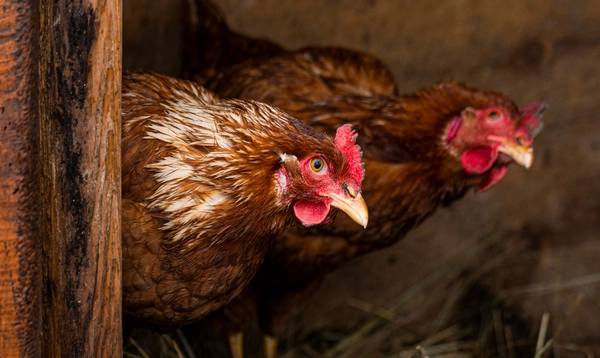Previously, according to the works of Charles Darwin, it was believed that only a person can blush from emotions. According to the new work, this is also common in chickens. At the same time, the degree of reddening of the skin differs depending on whether the bird reacts positively or negatively to this or that situation.

Animals express emotions through facial expressions, as well as movements that change the position of the ears or the shape of the eyes (this is characteristic of various types of mammals: primates, cats, horses, rodents, sheep, cattle, goats, pigs, dogs). However, changes such as reddening of the skin, which indicates changes in blood flow, can also occur under the influence of emotions.
For a long time, after the works of Charles Darwin, it was believed that only humans can blush. New work shows that this is not the case. For example, rapid reddening of the skin can occur in some birds with exposed skin on the face, as well as in the blue-and-yellow macaw.
In a new study, scientists from the National Research Institute for Agriculture, Food and the Environment in France analyzed whether emotional reactions in Sussex hens, a common domestic bird, can be expressed by reddening of the skin. The corresponding scientific article was published in the journal Applied Animal Behavior Science.
The study was conducted in a grove of 363 square meters located in the Loire Valley in France. There, the authors of the article observed six three- to four-month-old chicks for three weeks and filmed them. The birds found themselves in various situations: for example, they were fed with appetizing food or caught. The scientists took 18 pictures of chickens and then used a special program to measure how red the skin on their faces was in each picture.
When the chicks were given food they liked (mealworms), they blushed slightly. When the birds had a negative experience, for example, were caught, the skin on the face turned crimson-red. In a state of rest, her shade was noticeably lighter.

In response to an external stimulus, Sussex hens may blush in the areas of skin shown in the photo / © Applied Animal Behavior Science, Delphine Soulet et al.
In the second experiment, the researchers studied how domestic birds react to human interaction. It involved 13 chickens of the Sussex breed, which were acclimated to the presence of the experimenter for five weeks, and 12 chickens of the same breed, which became the control group. The experimenter spent two hours with the chickens every Monday morning and evening: he simply stood nearby in a static position, fed the birds and talked to them. The emotional reaction of the chickens was measured before and after the five-week interaction of the experimental group with a person.
As a result, when the researcher sat between the chicken coop of the experimental group and the open area where the birds from the control group were walking, the chickens reacted differently to his presence. Chickens that got used to the experimenter had a lighter skin color than those that did not interact with him. According to the authors of the study, this indicates that the birds in the experimental group were calmer and perceived the person more positively than the chickens in the control group.
The researchers noted that the degree of reddening of the skin can become a new indicator that will allow assessing the well-being of animals. In the future, they plan to study how emotional responses of this type vary within species, especially in dominance or submission relationships.


 1608
1608












